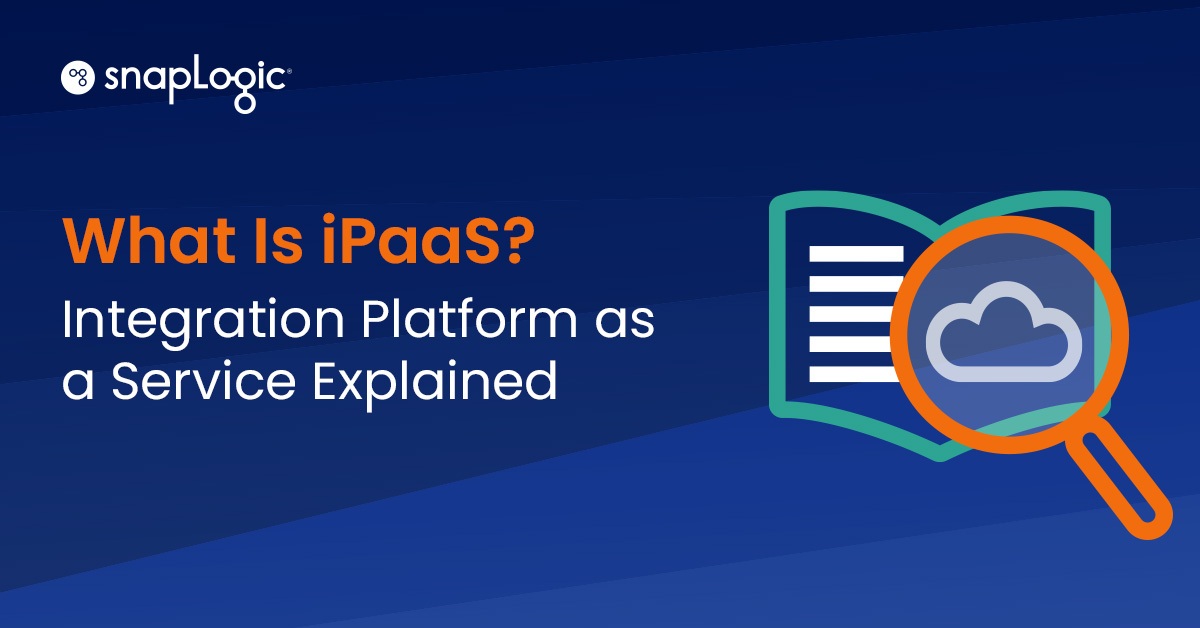When businesses began adding multiple applications to their systems, they needed to perform point-to-point integrations to connect apps so they could effectively work together. Manual, point-to-point integrations are impossible to scale, break easily, and require time and resources to maintain — this slows the business down and limits the speed it can go to market. To address this, businesses started using a middleware tool called enterprise service bus (ESB) to provide a centralized way to manage integrations and scale.
What ESB means?
Enterprise service bus (ESB) is an architecture that allows communication between environments, such as software applications.
Different software components (known as services) run independently to integrate and communicate with each other. This happens as each application talks to the bus, which modulates the communication, ensuring it arrives in the right place and says the right thing in the right way. An ESB is typically implemented using a specialized integration runtime and toolkit. An ESB enables apps to work independently from each other, but still communicate through the bus.
An ESB handles data transformation, connectivity, message routing, and communication protocol conversions — and makes these integrations available as a web services interface to be used by new applications. Multiple apps can be integrated to the bus and IT manages the bus, rather than using and managing point-to-point integrations between every single app. ESB architecture became the next evolution of integration designed to help orgs scale, centrally manage integrations, and facilitate a better user experience.

The Origin of ESB
Ever pondered the genesis of the term “Enterprise Service Bus” (ESB)? It surfaced in the tech world in 2002, thanks to Roy W. Schultes from the prestigious Gartner Group. He unveiled it in a seminal work by David Chappell, aptly titled “The Enterprise Service Bus.”
David Chappell offers a captivating narrative about his initial encounter with the term. It was introduced to him by a company named Candle, which asserted its role in coining “ESB.” However, the story takes an intriguing turn! During an enlightening conversation with Gartner, Schulte disclosed a parallel revelation. His introduction to the term was also courtesy of Candle, who, at that juncture, was marketing their innovative product, Roma.
Delving further into the annals of tech history, it’s revealed that Roma, brought to the fore by Candle in 1998, is acknowledged as the pioneering precursor to the modern ESB. This discovery aligns with industry insights, corroborating the evolution of ESB as a cornerstone in integrating diverse applications in service-oriented architecture (SOA).
ESB is an SOA component
The enterprise service bus is part of a service-oriented architecture (SOA) that uses web services (standard interfaces) to make services reusable without having to duplicate them every time they’re used with new applications. Apps behind the web services can be written in any programming language (like Java, Cobol, Microsoft .Net; supplied by SaaS applications, by a vendor like SAP that offers packaged enterprise applications, or through open source.
Web Service Definition Language (WSDL) (based on XML) defines the service interface, which is exposed using SOAP/HTTP or JSON/HTTP. Service lifecycles are governed and placed in a registry where developers can find them and reuse them for business processes or new apps. It’s ESB’s reusability that helps businesses scale their integrations far beyond the capacities of point-by-point integrations.
The benefits of using an ESB
Most businesses have a mix of on-premises, legacy systems, and cloud apps in their hybrid environment. An ESB makes connections using an adapter or connector, or the new software application’s API. The ESB handles various data formats, does the work of data transformation and routing — enabling application integration and making it easier to scale as more apps are added. It eliminates the need for point-to-point integrations and the cost, time, and risk involved with them.
Using an ESB for enterprise integration offers several benefits, including the following:
- Standardization and modularity: An ESB provides a standardized and modular approach to integration, which allows applications and services to be integrated in a consistent and reusable manner. This can reduce the complexity and cost of integration, and improve the maintainability and scalability of the overall system.
- Loose coupling and interoperability: An ESB promotes loose coupling between applications and services, which allows them to be developed, deployed, and managed independently. This improves the interoperability and flexibility of the system, and makes it easier to add, remove, or replace components without affecting the overall system.
- Centralized governance and management: An ESB provides a central point of control and management for enterprise integration. This allows integration policies, rules, and processes to be managed and enforced consistently across the enterprise, and makes it easier to monitor and manage the integration environment.
- Reusability and extensibility: An ESB allows integration components, such as connectors, adapters, and transformations, to be developed and reused across different applications and services. This can improve the efficiency and productivity of integration development, and make it easier to extend the integration capabilities of the system.
- Improved performance and reliability: An ESB can improve the performance and reliability of enterprise integration by providing features such as message buffering, routing, and transformation, which can optimize the flow of data between applications and services. This can reduce the impact of failures or bottlenecks, and improve the overall availability and reliability of the system.
The difference between point-to-point integration vs ESB
Point-to-point integration and enterprise service bus (ESB) are two different approaches to integration. Point-to-point integration involves connecting two or more applications or services directly, without using any intermediate or intermediary components. In contrast, an ESB involves using a central bus or message broker to mediate the communication between applications and services, and to provide a unified interface for accessing them.
Here are some key differences between point-to-point integration and ESB:
- Complexity and scalability: Point-to-point integration can be simple and easy to implement, especially for small-scale or ad-hoc integration scenarios. However, as the number of applications and services increases, point-to-point integration can become complex and difficult to manage, as each application or service needs to be connected directly to each other application or service. In contrast, an ESB can provide a more scalable and manageable approach, as it allows applications and services to be connected indirectly, through the central bus or message broker.
- Flexibility and adaptability: Point-to-point integration can be inflexible and difficult to adapt to changing requirements, as it involves hard-coding the connections between applications and services. In contrast, an ESB allows the connections between applications and services to be defined and managed in a more flexible and adaptable manner, using configuration rather than code. This allows an ESB to be easily adapted to changing business needs and requirements.
- Reusability and interoperability: Point-to-point integration can be difficult to reuse and can limit interoperability, as it involves tightly coupling applications and services together. In contrast, an ESB promotes loose coupling and interoperability, as it allows applications and services to be connected indirectly, through the central bus or message broker. This allows integration
Is an ESB good enough for the modern enterprise?
ESBs provide interoperability and support application integration and data integration. Developers spend less time on integration, freeing them to focus on innovation. However, today’s enterprises often find that ESBs still do not provide the speed and stability needed in an always-on environment. Changing integrations in an ESB can destabilize others, and ESB middleware updates have to be tested to ensure they won’t impact existing integrations. ESBs are centrally managed which means IT still has to take integration requests and this can lead to long wait times before integrations are made and workflows are improved. It’s also costly to implement disaster recovery and high availability for ESB servers. Many enterprises have found that, as an integration solution, ESBs do not support the automation, scalability, and speed they need to compete in a digital age.
ESB challenges can include the following:
- Complexity and cost: Implementing and maintaining an ESB can be complex and time-consuming, especially in large, distributed, or dynamic environments. This can require specialized skills and expertise, which can increase the cost of implementing and maintaining an ESB.
- Vendor lock-in and interoperability: Many ESBs are proprietary and vendor-specific, which can result in vendor lock-in and reduce the interoperability of the integration environment. This can make it difficult or expensive to switch to a different ESB vendor, or to integrate with non-ESB systems.
- Scalability and performance: As the volume and complexity of integration increases, an ESB may need to be scaled up to support the increased load. This can require additional hardware and software resources, which can increase the cost and complexity of the system. It can also impact the performance and reliability of the ESB, which may require careful tuning and optimization.
- Security and governance: An ESB can provide a central point of access to enterprise applications and services, which can raise concerns about security and governance. This can require careful planning and management to ensure that the ESB is secure, and that access to applications and services is controlled and monitored effectively.
- Legacy systems and integration: Many organizations have legacy systems that are not easily integrated with an ESB. This can require additional effort and resources to integrate these systems or to migrate them to a more ESB-friendly platform. This can impact the overall cost and complexity of the integration environment.
iPaaS vs ESB
In the realm of integration solutions, both Enterprise Service Bus (ESB) and Integration Platform as a Service (iPaaS) emerge as powerful contenders. While they share the common goal of facilitating communication and integration among disparate systems, their approaches and use cases differ significantly.
ESB: The Backbone of On-Premises Integration
ESB serves as a centralized backbone that enables different enterprise applications to communicate with each other. It excels in on-premises environments, where it orchestrates complex integrations, transforms data formats, and routes messages within the organization’s firewall. ESB is particularly well-suited for businesses with a substantial investment in legacy systems, offering a robust solution for integrating heterogeneous applications.
iPaaS: The Cloud-Native Integrator
On the flip side, iPaaS is a cloud-native integration solution designed to connect various cloud-based and on-premises applications. It offers a scalable and flexible platform, allowing businesses to quickly adapt to evolving integration requirements. iPaaS stands out for its ease of use, pre-built connectors, and ability to handle real-time and batch data integrations, making it an ideal choice for organizations embracing digital transformation and cloud adoption.
Key Differences:
- Deployment:
- ESB: Predominantly deployed on-premises, within the organization’s firewall.
- iPaaS: Cloud-based, accessible from anywhere with internet connectivity.
- Integration Focus:
- ESB: Excelling in complex, intra-organization integrations, especially with legacy systems.
- iPaaS: Versatile in integrating both cloud-based and on-premises applications, with a focus on cloud services.
- Scalability & Flexibility:
- ESB: Offers stable and reliable integrations but may require more effort to scale and adapt to changes.
- iPaaS: Highly scalable and adaptable to changing business needs, with the ability to rapidly deploy new integrations.
- Ease of Use:
- ESB: Can be complex and may require specialized knowledge for implementation and maintenance.
- iPaaS: User-friendly, with intuitive interfaces and pre-built connectors, reducing the learning curve.
Choosing the Right Solution:
The choice between ESB and iPaaS hinges on the specific needs and existing infrastructure of an organization. For businesses deeply rooted in legacy systems and seeking intricate on-premises integrations, ESB remains a strong candidate. Conversely, organizations leaning towards cloud services and requiring agile, scalable integration solutions will find iPaaS to be a compelling option.
The iPaaS is the next wave of integration
As a result of the above challenges, the integration landscape has been evolving, and a new type of integration platform, known as iPaaS (Integration Platform as a Service), has emerged as an alternative to the traditional enterprise service bus (ESB) approach. iPaaS is a cloud-based integration platform that provides a complete set of tools and services for integrating applications and services in a distributed, multi-tenant environment.
There are several reasons why iPaaS has gained popularity and is starting to replace ESB for enterprise integration:
- Ease of use and deployment: iPaaS is typically easier to use and deploy than an ESB, as it does not require specialized skills or expertise to set up and configure. iPaaS is typically provided as a service, which allows organizations to quickly and easily get started with integration, without the need to install or maintain complex software or infrastructure.
- Scalability and flexibility: iPaaS is designed to be highly scalable and flexible, as it is based on cloud computing technology. This allows organizations to easily scale up or down their integration capabilities, based on their changing needs and requirements. iPaaS also allows integration to be managed and performed in a distributed manner, which can improve the flexibility and agility of the integration environment.
- Cost and cost-effectiveness: iPaaS is typically more cost-effective than an ESB, as it does not require upfront investment in hardware and software, and it can be easily scaled up or down based on usage. iPaaS is also typically charged on a pay-as-you-go or subscription basis, which can provide better cost control and flexibility for organizations.
- Integration with cloud applications and services: Many organizations are adopting cloud-based applications and services, which can be easily integrated with iPaaS. This allows organizations to leverage their existing cloud investments, and to easily integrate cloud and on-premises applications and services.
- Support for modern integration patterns and technologies: iPaaS typically supports modern integration patterns and technologies, such as microservices, event-driven architecture, and APIs, which are becoming increasingly important in today’s integration landscape. This allows organizations to easily adopt and integrate these technologies, and to take advantage of their benefits.
In summary, iPaaS is starting to replace ESB as the preferred approach for enterprise integration, due to its ease of use, scalability, cost-effectiveness, support for cloud and modern technologies, and other benefits. As organizations continue to adopt cloud-based applications and services, and as the integration landscape evolves, it is likely that iPaaS will continue to gain popularity and become the dominant approach for enterprise integration.










